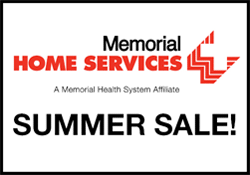|
 Surprisingly, they chose amounts that were much too small – either
underestimating how many calories they had burned or overestimating
how many were in the foods. Surprisingly, they chose amounts that were much too small – either
underestimating how many calories they had burned or overestimating
how many were in the foods.
“We believed adults and children would not be good at estimating the
calorie values of foods and drinks nor the calorie expenditure of
exercise. But we originally (thought) they would overestimate,” said
senior author Craig Williams of Children’s Health and Exercise
Research Center at St. Lukes Campus of the University of Exeter in
the UK, in email to Reuters Health.
The researchers selected 50 adults and 49 adolescents who exercised
regularly at sports clubs for rugby, netball, swimming, hockey and
badminton in the UK After one hour of sports practice, they
estimated how many calories participants had burned based on an
existing activity guide.
Then the researchers asked exercisers how much food or drink would
compensate for the calories they thought they had burned.
Participants were shown 30 individual squares of chocolate on a
board, and bottles of sports drink filled to half a bottle, one
bottle and four bottles, as visual cues.

On average, the exercisers chose less than half as much of both the
chocolate or the sports drink than would actually have compensated
for their calories burned, according to a report in the European
Journal of Clinical Nutrition.
The exercisers underestimated by about 500 calories, the researchers
found. Rugby players, for example, burned an estimated 700 calories
over one hour, but by their own estimation, they could only have
consumed about 330 calories of chocolate and 140 calories of sports
drink to compensate.
“Potentially this might be seen as encouraging, but as we pointed
out in the paper, we have qualitative evidence that their intentions
would have been to actually eat more when the training had finished,
even though they were reporting by underestimating,” Williams said.
Many participants remarked that they would have rewarded themselves
with more food or drink than they had estimated would compensate, he
said.
[to top of second column] |

They would likely have been equally poor at estimating for other
food items, like pizza, he said.
It is possible that the participants anticipated what the
researchers wanted to hear, and changed their answers accordingly,
Williams noted.
Also, in the study, the exercisers did not have access to the
nutritional information for the chocolate or sports drink, but in
reality that information would likely be available.
“Of course much of this information is already available on the food
labeling or in restaurants where they are providing the information,
but aspects of basic nutritional education I think do need to be
improved to allow us to make better informed choices and then how
this fits into our daily, weekly, monthly schedules,” Williams said.
It is not clear whether these subjects were underestimating how many
calories they burned or overestimating the calories in the foods, he
said.
“It is not imperative and we should not become too fixated with
trying to be as precise as possible, e.g., to the exact 1 kcal (this
would be impossible), but to be able to make better overall
estimations,” he said.
SOURCE: http://bit.ly/1gF9bmb
European Journal of Clinical Nutrition, online July 1, 2015.
[© 2015 Thomson Reuters. All rights
reserved.] Copyright 2015 Reuters. All rights reserved. This material may not be published,
broadcast, rewritten or redistributed.

 |